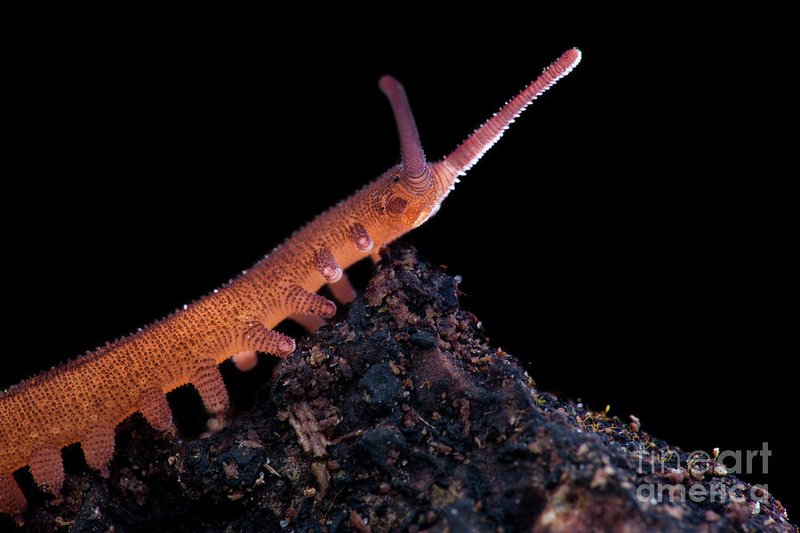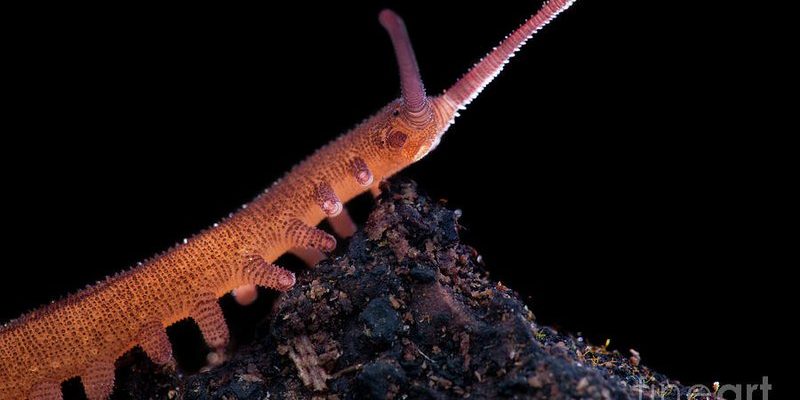
Velvet worms, or *Onychophora*, are soft-bodied, segmented animals found primarily in tropical and subtropical regions. Though they look a bit like a cross between a caterpillar and a slug, they’re not insects at all. Their ability to blend in with their surroundings reminds us of how chameleons change color – but instead of shifting hues, velvet worms often rely on texture and patterns to remain unseen. It’s a blend of artistry and survival that’s truly remarkable.
So, let’s roll up our sleeves and explore how these creatures pull off their camouflage magic, why this skill is vital for their survival, and what makes them special in the animal kingdom.
What Is Camouflage, and Why Is It Important?
Camouflage is nature’s way of giving certain animals a stealthy advantage. Picture this: you’re playing hide-and-seek in your backyard, but instead of using a big tree or a bush, you decide to wear colors that mimic the grass. You’d blend right in, making it hard for anyone to find you! This is exactly what camouflage does for animals in the wild.
For velvet worms, camouflage plays a crucial role in avoiding predators. With plenty of hungry eyes lurking in the underbrush—like birds, frogs, and even larger insects—staying hidden is essential. By blending in with their environment, velvet worms can continue their daily activities without the constant fear of being eaten. It’s like being a ninja in the animal kingdom—silent, stealthy, and oh-so clever.
In addition to protection, camouflage helps velvet worms sneak up on their prey. When they blend into the forest floor, they can surprise unsuspecting insects and small animals, making their hunt more successful. So, in a way, camouflage is not just about hiding—it’s also about being a skilled predator.
How Velvet Worms Camouflage Themselves
When it comes to camouflage, velvet worms have a few tricks up their sleeves. Their bodies are covered in a soft, velvety texture that mirrors the look of damp soil, bark, or moss. This interesting texture can help break up their outline, making them harder to spot against the forest floor.
Additionally, the coloration of velvet worms varies depending on their habitat. You’ll often find them in earthy tones—browns, greens, and even some yellows. These natural hues help them blend seamlessly into their surroundings. Imagine wearing clothes that match the landscape to perfection; that’s how these little critters operate daily.
Here’s where it gets even more interesting: velvet worms can often be found in small groups, which also contributes to their camouflage. When several velvet worms huddle together, they create a larger mass that’s even harder to distinguish from the environment. It’s a team effort—working together to become less visible and increasing their chances of survival.
The Role of Movement in Camouflage
Believe it or not, how velvet worms move plays a significant role in their camouflage success. Unlike faster animals, velvet worms are slow movers, which helps them avoid detection. When they crawl through the underbrush, they do so with a deliberate and almost cautious grace. This slow movement means they’re less likely to disturb the surrounding leaves or moss, allowing them to blend in seamlessly.
Have you ever noticed how a leaf sways gently in the breeze? In a similar way, when a velvet worm is moving at a slow pace, it can mimic natural elements like a falling twig or a small branch shifting. This careful, almost stealth-like movement allows them to stay hidden much longer than if they were darting around.
Moreover, their body posture contributes to their camouflage. When velvet worms remain curled or close to the ground, they reduce their visibility even further. It’s all about playing it cool and taking it slow.
How Camouflage Affects Velvet Worm Survival
The ability to camouflage is directly linked to the survival of velvet worms. In a world full of predators, this skill allows them to thrive in diverse environments. They can be found in rainforests, leaf litter, and even caves, where their camouflage adapts to different surroundings.
Let’s think about it this way: if you were trying to hide from a friend during a game, you’d want to choose a place that best matched your clothes and your body. The same goes for velvet worms; they choose habitats where they can naturally blend in. This ability to adapt to different environments means they can live in many areas, increasing their chances of finding food and mates.
Additionally, the improved camouflage helps them avoid not just large predators but also smaller ones. Even insects and arachnids can pose a threat. By staying hidden, velvet worms ensure that they can continue their life cycle and contribute to their ecosystem.
The Impact of Habitat on Camouflage
Now, let’s talk about how different habitats affect the types of camouflage velvet worms use. In a dense rainforest, where the canopy can obstruct light and create shadows, they may rely more on darker shades to blend in. Contrast this with a forest filled with lighter or sandy soil, where you might find velvet worms sporting more muted earth tones.
Velvet worms thrive in humid environments, and their camouflage reflects this. In rain-soaked areas, they might take on more mossy textures and colors. This adaptive camouflage is crucial for surviving in various seasons and weather conditions.
Climate change and habitat destruction pose threats to these fascinating creatures. As their environments change, so do the challenges they face. If they can’t adapt their camouflage quickly, they risk becoming more visible and vulnerable to predators. This further highlights the importance of understanding and preserving their habitats.
The Future of Velvet Worms and Their Camouflage
As we learn more about how velvet worms use camouflage, it’s essential to consider their future. As mentioned earlier, climate change and habitat loss threaten their survival. Many species are becoming endangered, and preserving their natural habitats is crucial to ensure they can continue to thrive.
Research is ongoing in this area, with scientists studying velvet worms to understand better their behaviors, habitats, and camouflage methods. By learning from these creatures, we can gain insight into how ecosystems function and the importance of biodiversity.
In a way, velvet worms teach us a valuable lesson about survival and adaptation. They remind us that even the smallest creatures can have significant roles in their environments and that every effort to protect nature counts.
The world of velvet worms is full of surprises, especially when it comes to their incredible use of camouflage. From their soft, textured bodies that blend into the forest floor to their careful movements that mimic nature, they are true masters of disguise. Understanding how these unique creatures survive and thrive in their environments can inspire us to appreciate the beauty and complexity of the natural world.
Next time you’re out in nature, take a moment to think about these remarkable animals. Their story of adaptation and survival is a reminder of how interconnected all life is and the importance of protecting our ecosystems for generations to come. Who knows, you might even spot a velvet worm hiding right under your nose!

